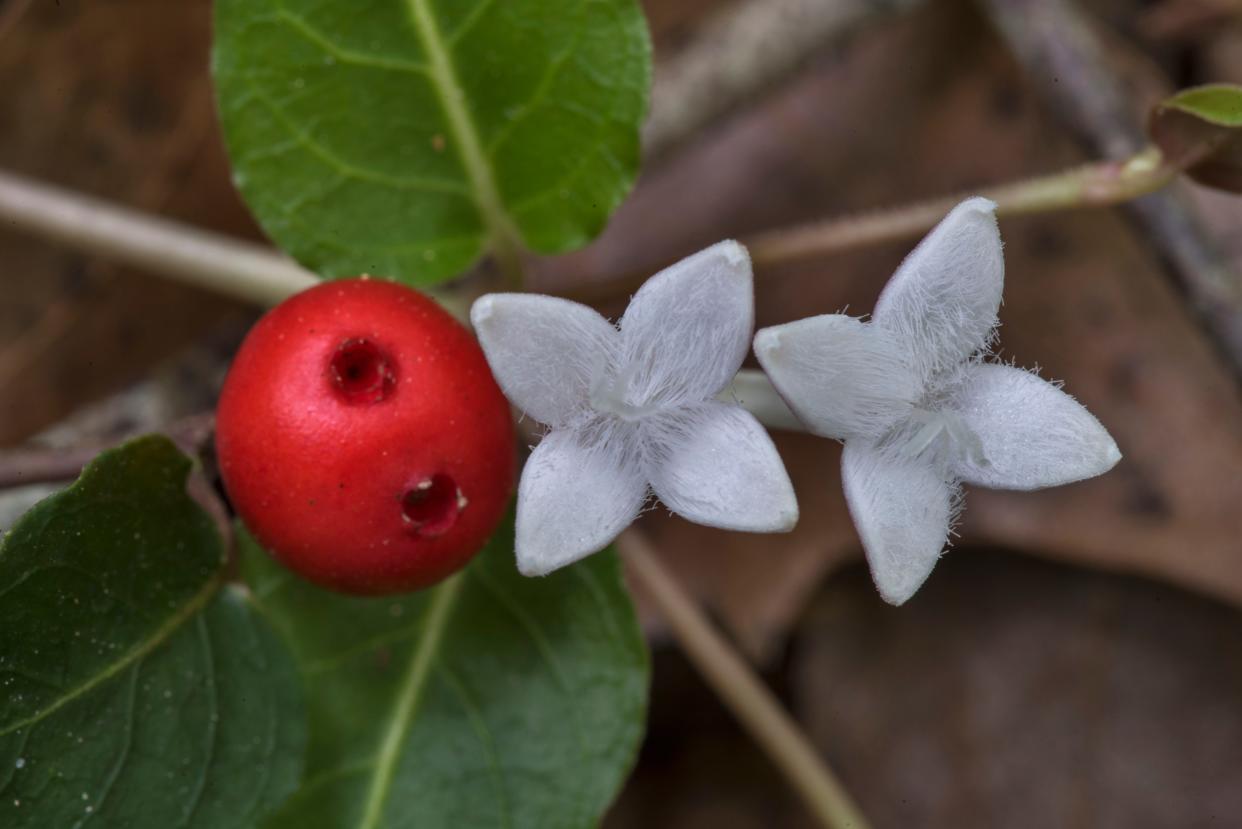Native Plant: Partridgeberry, a vine that grows near the ground, a nice addition to gardens

Partridgeberry
Editor’s note: Once a month OSU Extension Master Gardener Volunteers in Franklin County profile a plant that occurs naturally in central Ohio.
Beneath your feet in the deciduous and coniferous forests of Eastern North America is a creeping, trailing treasure. Often overlooked, Mitchella repens, commonly known as partridgeberry, could prove to be an aesthetically pleasing enhancement to your garden.
Partridgeberry is a small, woody vine with slender stems that rests on the forest floor. It is not a climber but more a sprawler as it hugs the surface of the ground. Its dark-green leaves are evergreen and provide lasting beauty in dreary winter months. The leaves, simple, ovate, and opposite create a certain cheerfulness as though the plant is begging to be admired and not walked all over.
Nestled within its deep-green leaves are a sprinkling of bright-red berries that often persist through winter, adding a flash of scarlet just inches above the ground. The berries although edible, have been described as insipid leaving more to the eye than sense of taste.
In a garden, this plant is low and thick, serving as a mat-like ground cover. Due to its difficulty to grow from seed, it is best introduced as a cutting or by division. Free stems can root at the nodes that meet the ground, and it will spread. Once established, partridgeberry is low maintenance and trouble-free.
More: Native Plant: American cranberry bush bears fruit for wildlife and humans, too
Come spring or early summer, depending on altitude and location, showy white trumpet-shaped flowers emerge, adding to the plant’s overall cuteness. A pair of funnel-like flowers display from a single calyx and are pubescent or covered with fine hairs. Each of these fragrant flowers is primarily pollinated by insects and each must be pollinated to produce a single berry. This is a choice plant to offer struggling bumble bee species as these ground dwelling insects are the primary pollinators of partridgeberry.
Birds and mammals are the primary consumers of the berries and thus largely responsible for seed distribution. This plant performs best in dappled sunlight to full shade and offers interesting, brilliant white flowers, intriguing berries and foliage.
Historical uses for partridgeberry range from easing labor pains in childbirth to the treatment of menstrual cramps, insomnia, fever and various muscle cramps and pain.
Growing Conditions
Hardiness zones: 4A-9B
Sun: partial sun to full shade
Water: low, medium
Maintenance: little to none required
Soil: best in acidic soil, tolerant of dry soils
Propagation: difficult from seed, best by cutting or division
Pests/diseases: none significant
This article originally appeared on The Columbus Dispatch: With dark-green leaves and white flowers, partridgeberry a lovely vine

